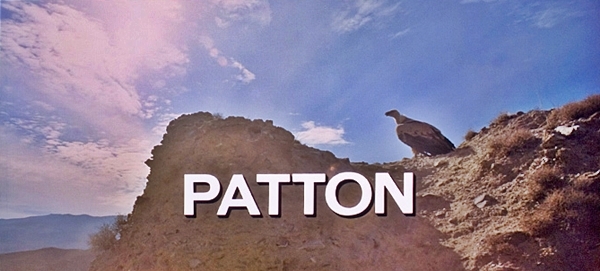

![]()
![]()
|
BIG MOUTH STRADDLER George C. Scott was not the first choice to play Patton—Burt Lancaster, Lee Marvin, Rod Steiger and Robert Mitchum turned thumbs down—but he was the right choice, despite having told the London Times the script was a mess and he was “ashamed of being a part of it.” Apologizing, he went on to bring his angry, sometimes violent, contradictory, gravel-voiced panache to a general who was notorious for his own. Patton’s “guts” in resisting military command protocol and his uncanny intuition about his enemies’ next moves were the celebrated parts of successful strategy, yet he was also a prima donna, intolerant of any weakness in others. The infamous slap of an enlisted man—in fact, there were two slaps just days apart—revealed a general in denial of the consequences of the terror of war because he loved war. And a general who couldn’t keep his mouth shut: the portrait doesn’t shy away from the sticky situations he put himself in with American, British and Russian politicians and supreme military commanders. While the movie doesn’t dampen the legend of the self-proclaimed genius, it alters one military action—Patton never engaged Rommel in battle in North Africa or Europe. (Other than his God thing, we also learn little about his private life, saved for the TV sequel The Last Days of Patton.) If some of us prefer the Scott of The Hospital, in which the Paddy Chayefsky rants are very funny and often moving, most of us can’t deny he’s entertaining as grand straddler Patton in a one-man show, though what does it say about director Franklin J. Schaffner and writers Francis Ford Coppola and Edmund H. North to make equally significant figures such as Bradley, Montgomery and Alexander prejudically doltish? Eisenhower doesn’t make an appearence but he too is semi-trashed. Patton, with its hugely panoramic views often not containing much in them, is puny of mind; the same year, a rollicking yet thorny double entendre called M*A*S*H swamped the intent of lumpy traditionalism, earning $20 million more at the box office. Filmed in Dimension 150, Patton had limited opportunities to open in it—only 25 theatres nationwide were specifically equipped to show the process—but Fox chose not use any D-150 houses for initial roadshow releases; in subsequent runs, the movie was booked in five D-150 theatres, primarily in California. Keeping the advertising hype of the logo, single projection Cinerama venues and older roadshow theatres reeled standard 70mm. In Chicago, it premiered at the Palace in the latter format on 3/4/1970, lasting 17 weeks. The only theatre designed to show Dimension 150 in the Chicagoland area at the time was the UA Cinema 150 in Oakbrook, which would end the hardticket run of Paint Your Wagon a week after Patton opened. Oscar wins for best picture, actor, director, original screenplay, art/set direction. sound, film editing. Oscar nominations for best cinematography (Fred Koenekamp), special effects, original score (Jerry Goldsmith). 
Text COPYRIGHT © 2003 RALPH BENNER (Revised 12/2024) All Rights Reserved. |